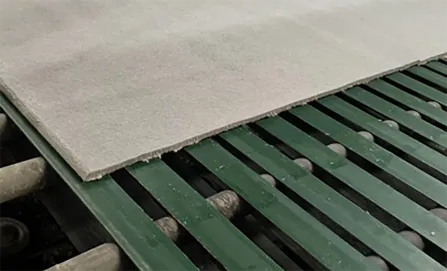Nov . 08, 2024 09:52 Back to list
Exploring the Design and Functionality of Ceiling Grid Systems in Contemporary Architecture
The Evolution of T Ceiling Grid A Structural Perspective
When discussing the architectural and structural components of modern buildings, one element that often goes unnoticed yet plays a vital role is the ceiling grid system. Specifically, the T ceiling grid has gained traction due to its versatility, efficiency, and enhanced aesthetic appeal. This article delves into the characteristics, benefits, and applications of T ceiling grids, providing a comprehensive look at this essential element of contemporary architecture.
Structural Characteristics
The T ceiling grid system is characterized by its T-shaped metal or vinyl strips that create a grid-like framework on which ceilings can be installed. These grids provide support for ceiling tiles, lights, and other fixtures while allowing for quick and easy access to plumbing and electrical systems above. The grid is typically suspended from the structural ceiling using clips and wires, which not only supports the weight of the tiles but also helps in distributing any loads evenly across the ceiling.
One of the standout features of T ceiling grids is their modular nature. The grid structure allows for the quick installation and removal of individual ceiling tiles, making maintenance and renovations much more manageable. Unlike traditional plaster ceilings, which can require extensive work to modify, T ceiling grids facilitate a more adaptable design that can keep pace with the changing needs of modern spaces.
Aesthetic Appeal
Beyond structural integrity, T ceiling grids lend themselves to a variety of aesthetic choices. The grid can be painted or finished in different colors to complement the overall design of a room. Additionally, the ceiling tiles come in a plethora of patterns and materials, including acoustic tiles that absorb sound, moisture-resistant tiles for humid areas, and decorative tiles that add a unique flair to commercial spaces.
In commercial environments, especially in office buildings and retail areas, an attractive ceiling can significantly enhance the ambiance and overall experience. T ceiling grids help create a clean, finished look while allowing architects and designers to play with different themes and styles. The ability to customize ceilings according to specific needs is essential in creating inviting, functional spaces that cater to both employees and customers.
t ceiling grid

Energy Efficiency and Acoustics
Another significant advantage of T ceiling grid systems is their contribution to energy efficiency and acoustics within a building. Many ceiling tiles are designed to mitigate sound, creating a quieter environment suitable for offices, classrooms, and medical facilities. The effective use of acoustic tiles within the grid system can lead to reduced noise pollution and increased productivity, as employees are less likely to be distracted by excessive sound.
Furthermore, the cavity between the suspended ceiling and the structural ceiling can be used for additional insulation and energy-efficient lighting systems. By incorporating features such as LED lights in the grid design, buildings can utilize fewer resources while still maintaining a well-lit and comfortable environment.
Applications in Various Industries
The versatility of T ceiling grids makes them applicable across numerous sectors. In commercial real estate, they are integral to the design of office buildings, shopping centers, and restaurants. Hospitals and healthcare facilities benefit from the adaptability of ceiling grids, which allow for easy access to vital systems and accommodate specialized lighting and sound-reducing features.
Educational institutions have also adopted T ceiling grids in classrooms and communal areas. This approach improves the learning environment by reducing noise and providing a modern, appealing aesthetic that engages students.
Conclusion
In conclusion, the T ceiling grid system is an essential construction element that adapts to the evolving demands of modern architecture. With its ease of installation, aesthetic versatility, acoustic benefits, and applications across various industries, it is clear that the T ceiling grid is more than just a structural necessity; it is a transformative component that enhances the functionality and beauty of spaces. As buildings continue to evolve, the role of innovative ceiling systems like the T ceiling grid will undoubtedly become even more pronounced, ensuring that they meet the needs of future generations in both residential and commercial settings.
-
Quality Ceiling Trap Doors & Access Panels | Easy & Secure AccessNewsAug.30,2025
-
Durable Ceiling T Grid Systems | Easy InstallationNewsAug.29,2025
-
PVC Gypsum Ceiling: Durable, Laminated Tiles for Modern SpacesNewsAug.28,2025
-
Pvc Gypsum Ceiling Is DurableNewsAug.21,2025
-
Mineral Fiber Board Is DurableNewsAug.21,2025
-
Ceiling Tile Clip Reusable DesignNewsAug.21,2025







